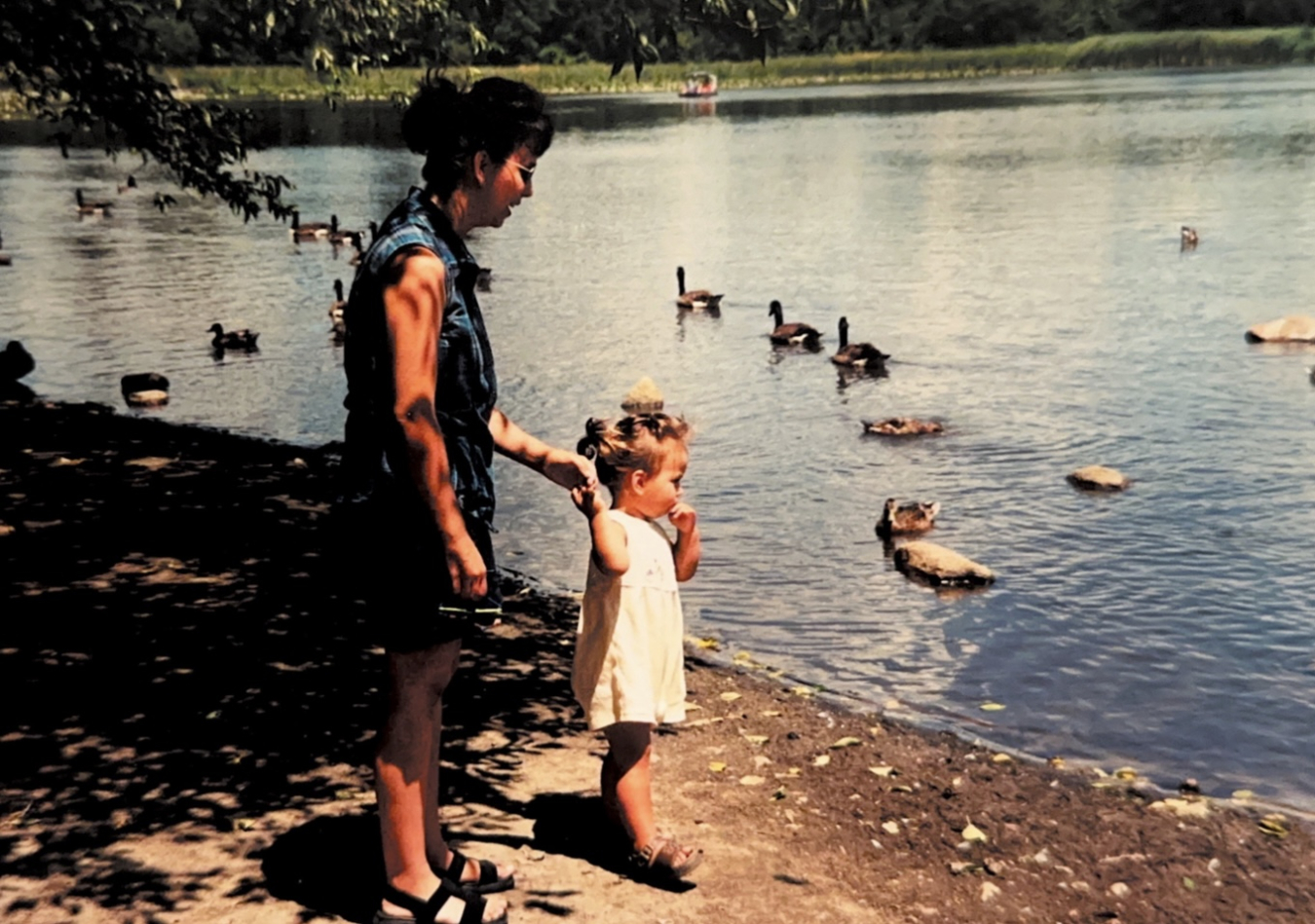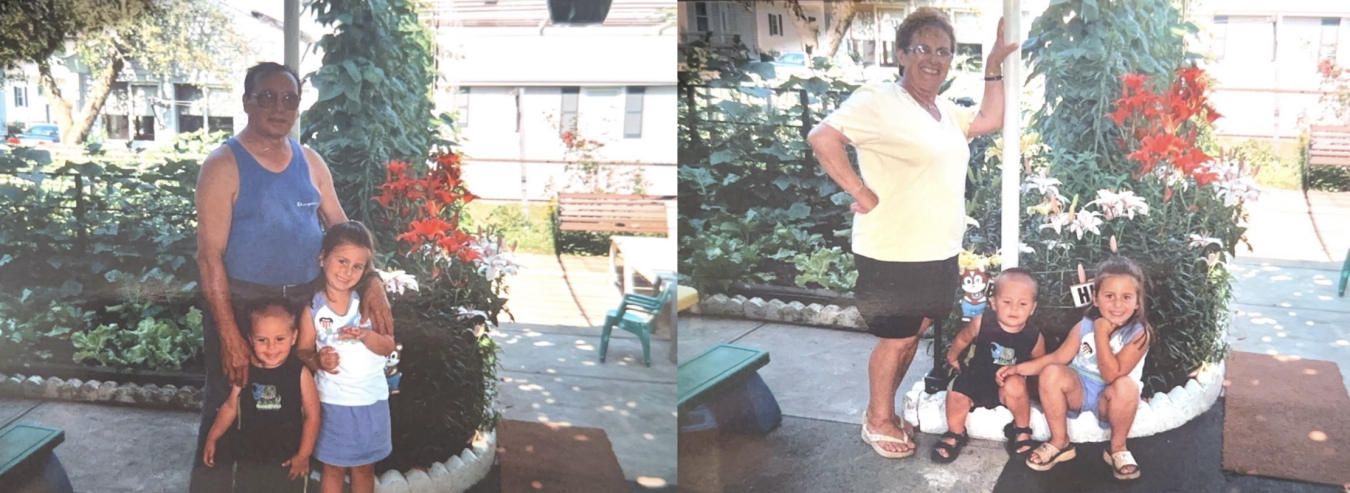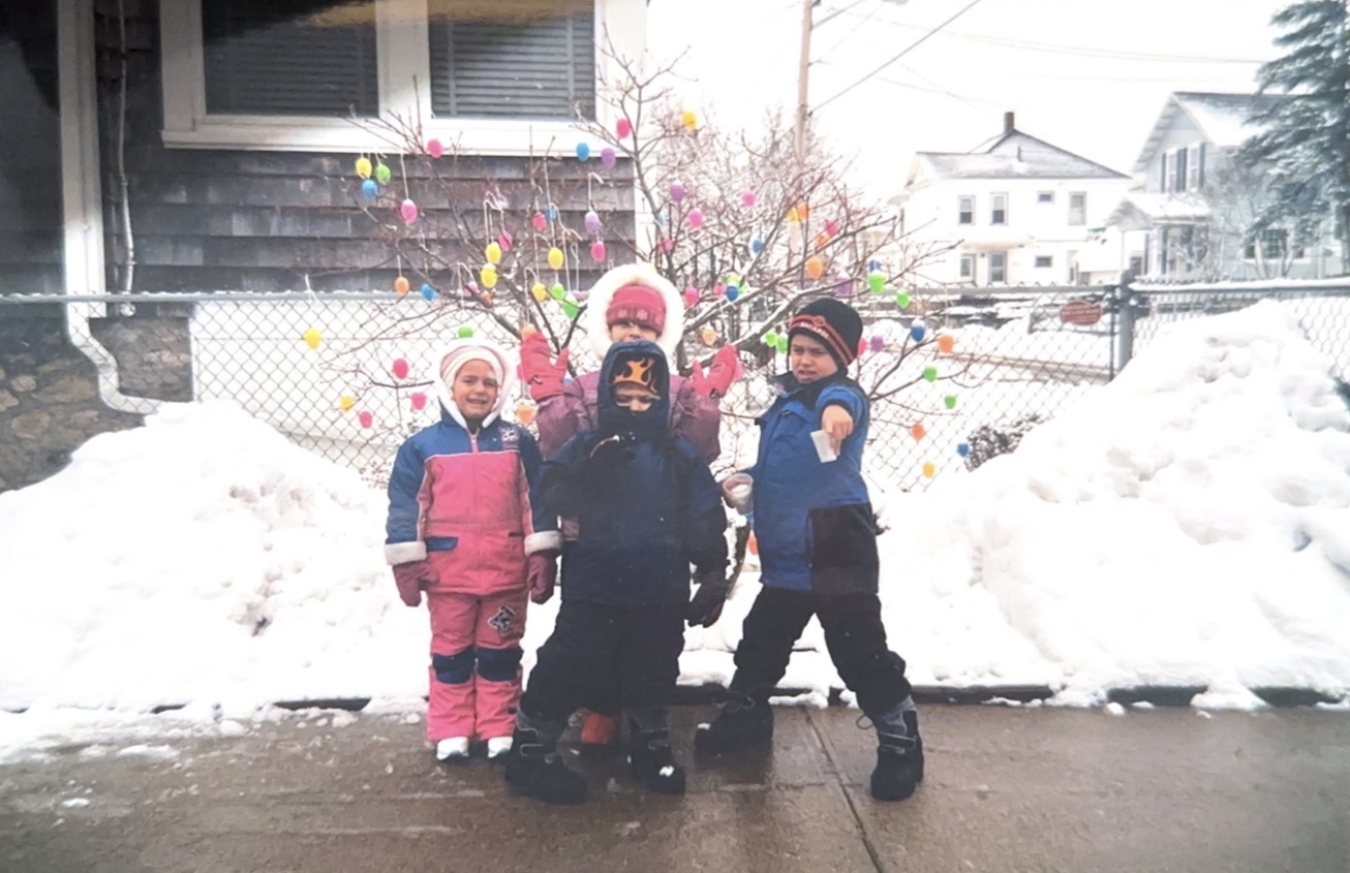Megan Lee Anderson, an R&D mechanical engineer at Sandia National Laboratories, shares her childhood interest in helping the environment, and how a lifetime of interaction with the coastline, along with a series of serendipitous events led her to a career in marine energy.
Water Power Technologies Office
May 29, 2024In elementary school, Megan Anderson learned all about the hole in the ozone layer, greenhouse gases, and fossil fuels. But unlike other kids, who might have felt satisfied sculpting a papier mâché wind turbine, turning the lights off, or reusing a plastic bottle, Anderson felt an urge to do more. So, she formed her own environmental committee, grabbed a clipboard, and set off to recruit her neighbors to the cause.

But despite all her legwork (and footwork), nothing came of her mini-movement. “My mom and my best friend’s mom signed up,” Anderson said. “But the passion was there from an early age.”
And the passion is still there.
Today, Anderson is an R&D mechanical engineer at Sandia National Laboratories where she’s working to get a less-well-known climate solution into the world. That solution is marine energy, which includes energy generated from ocean waves and tides as well as ocean and river currents, and it’s a perfect fit for Anderson. She not only grew up in a family of technical titans; she also spent her childhood swimming, surfing, and adoring the ocean and its powerful waves.
“I liked the idea of wind energy, but not onshore, that was too inland for me. I’m a coastal girl. Give me something related to the ocean,” Anderson said.
At Sandia, Anderson is helping advance marine energy technologies closer to commercial success. To do that, she helps gather and share valuable data, so the industry can benefit from others’ discoveries. She is even studying the potential for wave energy to power an aquaculture center (or seafood farm) in Guam.
In this Q&A, Anderson shared how remote learning in college due to the COVID pandemic helped her get to Sandia, why she switched from water quality to wave energy, and why she thinks women engineers should consider a career in marine energy.
-
You started to care deeply about the environment from a young age. But how did you end up in mechanical engineering?
I grew up by the ocean in Dartmouth, Massachusetts, a small coastal town near Cape Cod. I have always been fascinated by the ocean and feel a deep, special connection to it. But my decision to major in mechanical engineering had a lot to do with my love for math and my family background. My dad and brother are computer scientists. And my uncle, his wife, and my cousins are all mechanical engineers. Even my grandfather, who grew up in a rural village in Portugal and had no formal education, loves to fiddle with and design mechanical and electrical systems.
Ripple Effect
WPTO’s Ripple Effect series features individuals whose impactful work will help advance hydropower and marine energy technologies to achieve a clean energy future.
That makes sense. A love of the ocean plus mechanical engineering and environmental science equals marine energy.
Exactly. I knew I wanted to do something with the ocean and renewable energy, and I had heard of wave energy. I attended the University of Massachusetts Amherst (UMass). And thankfully, my university was starting a wave lab the year I was deciding what to specialize in. So, that’s how I got into marine energy. I was at the right place at the right time.
That's serendipitous. Marine energy is relatively niche, so most people seem to find it accidentally.
My interest in water led me to it. I originally thought I wanted to be a civil engineer. I did water quality testing, which was cool. But I wanted to be on the more technical design side, which led me to marine renewable energy. So, I looked up internships at Massachusetts-based clean energy companies. And one of them was with Resolute Marine Energy, which was a wave-powered desalination company that used wave energy to create clean drinking water from the ocean. It just so happened that company was based near my hometown.

You also did Engineers Without Borders, right?
I did. I went to Kenya because Engineers Without Borders had built some rainwater catchment systems there, and they wanted to see what the quality of the water was. I did water quality testing, and it was hot. Really hot. We went in January, and we had to wear protective gear—full on boots and pants—while we fixed the rainwater systems and tested the water. And even though it was the dry season, we had lots of rain, which cooled us off a bit. It was one of the best experiences of my life, seeing the direct impact of our work and making something for the greater good.
Have you faced any obstacles in your journey so far?
COVID was a hurdle. We got sent home during my junior year spring semester at UMass when people start moving from basic courses to a specific focus. That was a massive obstacle, but it led me to Sandia. Ryan Coe, my colleague here in the Water Power Technologies Department, gave a talk in our remote ocean engineering course. After I graduated, I did a one-year master’s degree because there were no jobs. I saw an opening for a graduate intern at Sandia and reached out to Ryan. That’s how I got here.
So, what are you working on at Sandia?
Right now, I’m on a couple projects. One of them is the Portal and Repository for Information on Marine Renewable Energy, or PRIMRE, which is a huge online platform that houses all the information you can imagine on marine energy projects and technologies, available wave energy resources, environmental effects, and more. It’s a great resource, especially for students.
The other project is Wave-SPARC (Systematic Process and Analysis for Reaching Commercialization), a joint project between the National Renewable Energy Laboratory and Sandia. My team and I use open-source software to find ways to optimize wave energy converter designs to be less costly without compromising their power output. And, during my internship, I did a lot of outreach to marine energy researchers, state and federal regulators, marine contractors, and wave energy developers to learn about powering blue economy markets, like desalination, ocean observation, and isolated community microgrids.
That's probably the coolest part: learning what people care about. Then, we can take that feedback and create tools or other resources to meet their needs.

Have you heard any common misconceptions or misperceptions about marine energy or renewable energy in general?
People talk about how if the wind doesn’t blow and the sun doesn’t shine, we won’t have energy. But wave energy converters coupled with other renewable energy sources could be a great resource. I wish more people knew that.
Also, some people think wave energy—or anything going in the ocean—is an unknown realm. But countries in Europe have been using wave energy much longer than we have. So the concept of putting something in the ocean is not new.
Where do you hope your career will go from here?
I was so lucky to get a foot in the door at Sandia right out of college because research, engineering, helping the environment—that's everything I want to do with my career. I see myself doing research in this field for a long time. Even though it seems like people have done a lot of research on wave, current, and tidal energy, it’s still far behind the wind energy industry. But people working in marine energy are at the forefront of making it a really impactful industry.
In an ideal world, what would you most hope to accomplish over the course of your career?
I hope to see the culmination of a lot of little successes. Obviously, I want to shoot for the stars and solve climate change all at once. But that’s not realistic for one person. Just seeing projects through from start to finish, knowing that you’ve made an impact on the industry, would be the most fulfilling thing. And that can take years to do. In such an exciting field, it’s hard to say exactly what that would look like.
What advice do you have for students who might want to get into either mechanical engineering or wave energy?
The marine energy industry is fairly new, very welcoming, and encourages all new ideas. Because it’s such a small industry, it’s a really close-knit community. So, put yourself out there, even though it’s scary. And if you are a female engineer, seriously consider a career in marine energy. You won’t regret it.
Catch up on WPTO's other Ripple Effect profiles and the Office of Energy Efficiency and Renewable Energy's Clean Energy Champions.
And stay in the know with WPTO! Receive the latest information on funding opportunities, events, and other news by subscribing to the Hydro Headlines and Water Column newsletters, as well as the comprehensive Water Wire newsletter.

